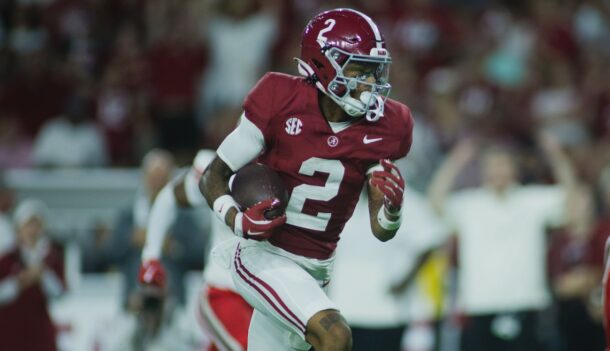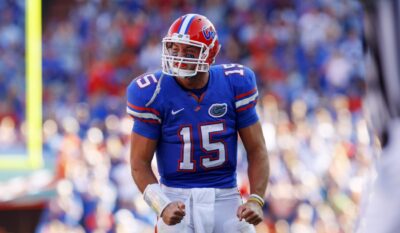
At first glance, it was obvious that Texas A&M was better defensively in the first season under defensive coordinator John Chavis.
The Aggies went from next-to-last in the SEC in pass defense to second, behind only Georgia, in the same category. It was a difference of nearly 70 yards per game. They also went from last in the SEC in total defense to the middle of the pack, eighth in fact, by a difference of also about 70 yards per game.
Okay so do the math. The run defense went virtually unchanged. Run defense was the team’s Achilles heel. Last in the conference in 2014, the Aggies were next-to-last in 2015, improving by approximately three yards.
There’s nowhere to go, it seems, but up.
2015 stats
Rushing yards allowed per game (SEC rank): 213.7 (13th)
Most yards allowed in 2015: 311, Auburn
Rushing TDs allowed (SEC rank): 19 (10th)
100-yard rushers allowed: (Nevada) James Butler, 107 yards; (Arkansas) Alex Collins, 151 yards; (Alabama) Derrick Henry, 236 yards; (South Carolina) Brandon Wilds, 128 yards; (Auburn) Jovon Robinson, 159 yards; (Western Carolina) Detrez Newsome, 111 yards; (LSU) Leonard Fournette, 159 yards; (Louisville) Lamar Jackson, 226 yards.
Front seven
In their 4-3 scheme, the Aggies have the most dynamic bookends up front in all of college football. DEs Myles Garrett and Daeshon Hall are in a class of their own. The SEC leader in both sacks (12.5) and tackles for loss (19.5), Garrett still has tremendous upside entering his junior season.
Flanking the two bookends are tackles Zaycoven Henderson and Daylon Mack. The pressure is on them to produce, and with a year of experience behind them, they should. Mack was 10th on the team in tackles (32) last year in his freshman season while Henderson played a much bigger role last season as a sophomore.
Veteran Shaan Washington leads a core of linebackers who have question marks entering 2016. Washington was second on the team in tackles (81) last season as a junior. Middle linebacker Otaro Alaka and strong side linebacker Dwaine Thomas, who played in 10 games as a freshman in 2015, will be counted on heavily to make strides in the run defense.
Where the Aggies’ run defense excelled was in short-yardage situations and in the red zone. Opponents were able to average just 2.3 yards per carry on 37 3rd-and-three-or-less attempts. In the red zone, opponents averaged just 2.99 yards per carry in 84 carries.
Who is the secondary enforcer?
Free safety Armani Watts fits that billing. The leader of the team in tackles, and it wasn’t even close, Watts piled up 126 stops. He made an incredible 83 solo tackles last season, tied for third-most in the nation and more than any other teammate’s combined tackles.
Watts will be a junior and the leader in the Aggies’ secondary again in 2016. The 5-foot-11, 200-pound human missile also came up with an interception, forced 2 fumbles and had 6 tackles for loss.
Greatest concern
Same as last year, the middle of the Aggies’ defense has to improve, and that begins with the two tackles. But unlike last year, experience appears to be on their side. With Chavis’ tutelage, they’ll only get better as will the defense as a whole.
So whatever concerns there are with the Aggies’ run defense, there appears to be as many answers. That bodes well for an ever-improving defense in Chavis’ second season at the helm.
One stat that must improve in 2016
The Aggies have to absolutely improve on first down run defense. They allowed 5.98 yards per carry on first down and a whopping 10 yards or more 57 times.
Better/worse in 2016?
Run defense was the area in which the Aggies did not see significant improvement from the previous year. However, a year of experience should help in that department; that and another year under Chavis’ system. The bottom line is, the Aggies run defense was still bad last season, leaving nowhere to go but up.
Glenn Sattell is an award-winning freelance writer for Saturday Down South.







